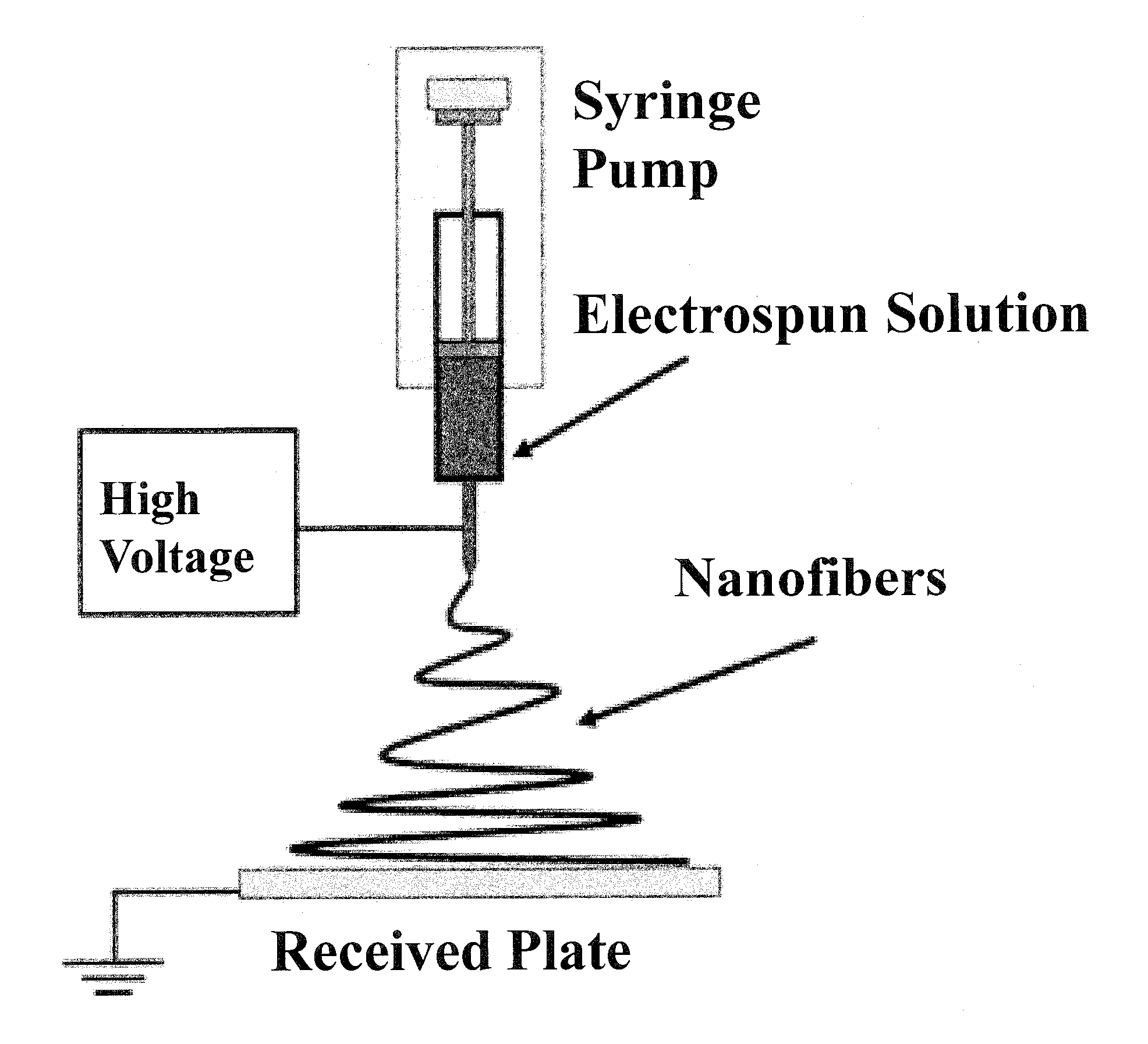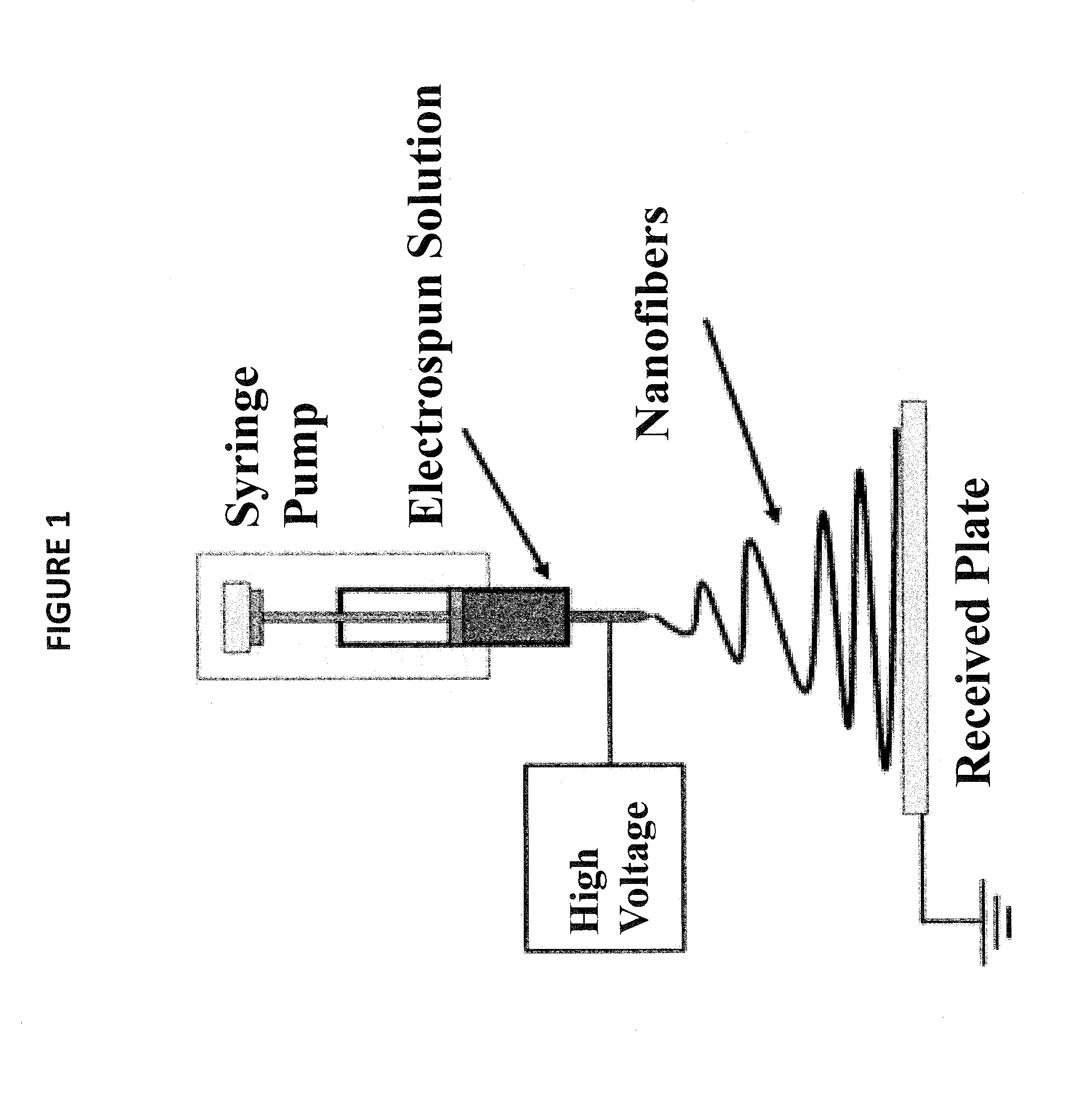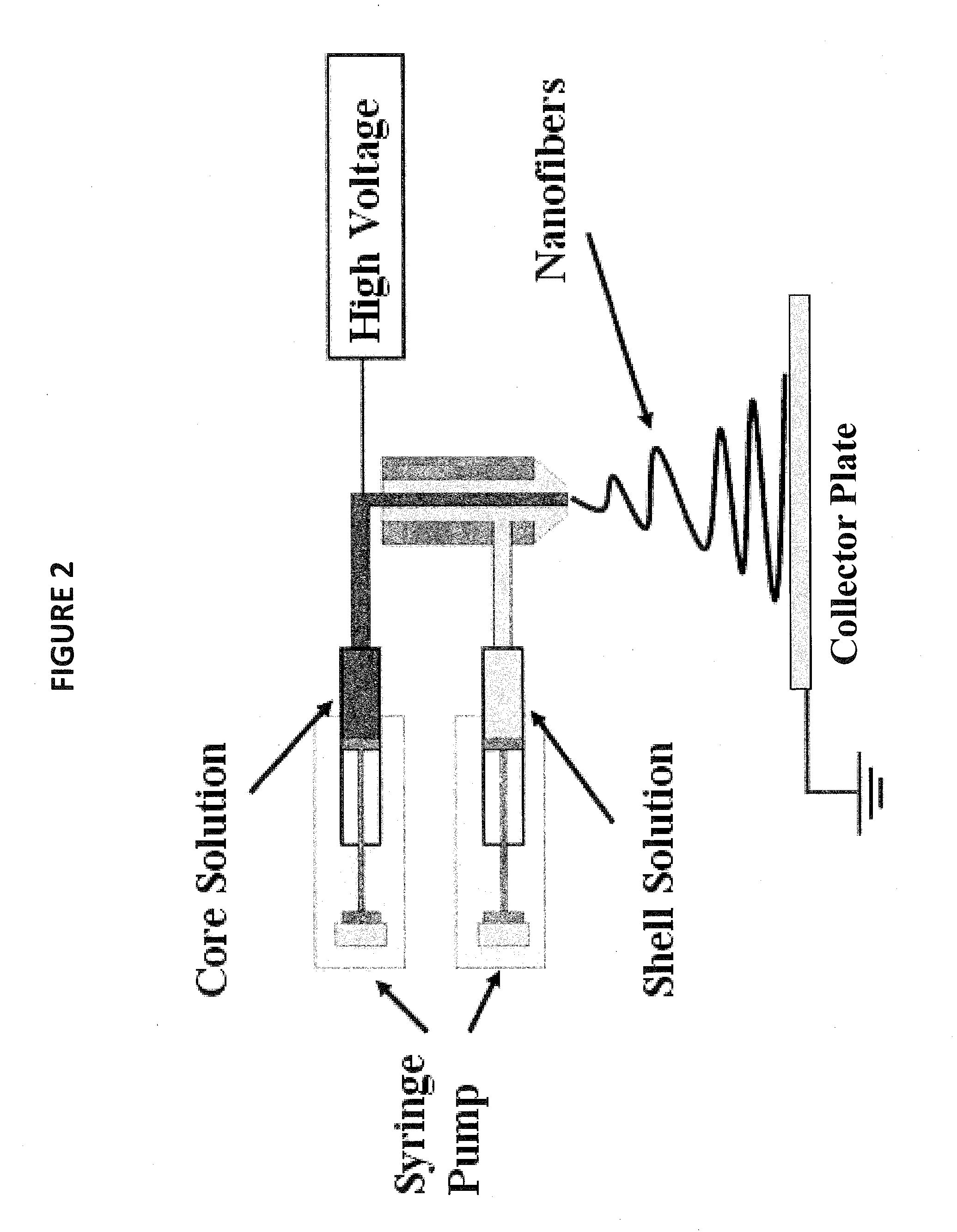Nonwoven fiber materials
a technology of nonwoven fibers and fiber materials, applied in textiles, textiles and papermaking, peptides, etc., can solve the problems of limited therapeutic effect, biotoxicity risk, limited use of electrospun materials,
- Summary
- Abstract
- Description
- Claims
- Application Information
AI Technical Summary
Benefits of technology
Problems solved by technology
Method used
Image
Examples
example 1
Comparison of Antimicrobial Agents
[0087]A minimum inhibitory concentration (MIC) test was conducted to measure the efficiency of certain silver-based antimicrobials against each bacterial isolate. A sterile round-bottom plastic 96-well plate containing 100 ml of serially 1:2 diluted concentrations of antimicrobial solutions was inoculated with 100 ml of 5-8×105 CFU / ml of each bacterial isolate. Each antimicrobial sample was tested at 15 serially diluted concentrations starting at their original highest concentration (0.015-1000 μg / ml).
[0088]After the microplates were incubated for 24 h, the MIC was recorded to be the lowest concentration of antimicrobial which exhibited no visible growth. After 24 h of incubation, 10 μl of the suspension from all of the clear wells (showing no bacterial growth) was dropped onto a MH agar plate and incubated for 24 h. The minimum bactericidal concentration (MBC) was determined by the concentration that failed to kill bacteria.
[0089]The silver nanopar...
example 2
Incorporation of Therapeutic Agents into Scaffolds of Varying Fiber Architectures
[0092]Different polymers, solution concentrations and solvent combinations were used in this study. In each case the accurate weight percentage of polymer was weighed and dissolved in the appropriate solvent. The mixture was stirred on a magnetic stirrer plate for at least 12 hours until a homogeneous solution was obtained. When homogeneous solutions could not be obtained at room temperature, the mixtures were heated on a heated magnetic stirrer. Polymer solutions were used within 24 hours of preparation to eliminate evaporative loss of solvent and consequent change in solution concentration. Table 3 shows the polymers used in the following experiments.
TABLE 3Polymers used in Example 2PolymerAbbreviationMolecular weightPolylactic acidPLA 70,000 g / molPolycaprolactonePCL 80,000 g / molPolyvinyl alcoholPVA100,000 g / molPolyethylene oxidePEO400,000 g / mol
Tricalcium Phosphate (TCP)
[0093]Tricalcium phosphate is a...
example 3
Comparison of Silver-Containing Scaffolds
[0113]All fiber morphologies were created using FDA approved, biocompatible, biodegradable polylactic acid (PLA) (70,000 g / mol) using an electrospinning system. Two different antimicrobial agents, Silvadur ET and silver nanoparticles (average diameter of 20 nm), as described in the previous examples were incorporated in the polymeric fibers. The antimicrobial activity of the scaffolds against different bacteria was determined by two different methods: (i) qualitative evaluation using an agar diffusion assay (parallel streak method) and (ii) quantitative evaluation in a liquid medium.
[0114]Qualitative analysis of the antimicrobial activity of the scaffolds treated with Silvadur ET and silver nanoparticles was evaluated using the parallel streak method (Antibacterial Activity Assessment of Textile Materials—AATCC 147). Scaffolds were placed on a substrate of bacteria in an agar plate and incubated overnight at 37° C. Inoculants used for evaluat...
PUM
| Property | Measurement | Unit |
|---|---|---|
| diameter | aaaaa | aaaaa |
| diameter | aaaaa | aaaaa |
| diameters | aaaaa | aaaaa |
Abstract
Description
Claims
Application Information
 Login to View More
Login to View More - R&D
- Intellectual Property
- Life Sciences
- Materials
- Tech Scout
- Unparalleled Data Quality
- Higher Quality Content
- 60% Fewer Hallucinations
Browse by: Latest US Patents, China's latest patents, Technical Efficacy Thesaurus, Application Domain, Technology Topic, Popular Technical Reports.
© 2025 PatSnap. All rights reserved.Legal|Privacy policy|Modern Slavery Act Transparency Statement|Sitemap|About US| Contact US: help@patsnap.com



